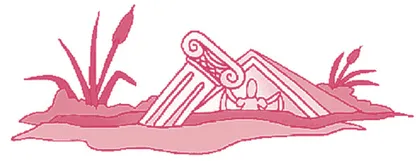How Do Archaeologists Find Sites?考古学家怎样发现遗址?
作者: 雷文 周宏韬译

There are a bunch of different methods that archaeologists use to get an idea of where a past settlement might be.
考古学家有多种办法了解古代遗址可能在何处:
Primary Documents
原始文献
A primary document is any sort of text or recording of information that was written at the time of the event. Books, clay tablets, old maps etc. There’s usually a bunch of geographical information included with the accounts of the event. If you know enough about how they viewed the world back then, you can get a pretty good idea of where major events happened, or specific locations of cities.
原始文献是事件发生的那个时期写下的任何形式的文本或信息记录,比如书籍、泥板文献、古旧地图等。事件记录中通常都包含大量地理信息。如果非常熟悉古人在过去是如何看待世界的,就能很好地推断出重大事件发生之地或某些城市的特定位置。
Locals
当地人
Normally, digs happen with teams from all over the world. The best thing to do when looking for new potential dig sites in a foreign place? Ask the farm boy down the road, interact with the locals living there. If it’s an area that’s seen centuries of human activity, they’re bound to know of a few places that were formerly inhabited. Tons of sites are found by locals going about their daily business all the time. Archaeology is not an introverted1 profession, get friendly!
考古挖掘工作通常由世界各地的考古团队实施。在陌生的地方寻找待发掘的新遗址时,怎么做最妥当?问问路上碰到的农家小伙,与生活在那里的当地人联系沟通。如果人类曾在这个地区活动过数百年,当地人一定知道一些先人栖居的地方。大量考古遗址是当地人从事日常活动时发现的。考古学可不是内向封闭的行当,要去交朋友!
Surveys
勘察
Surveys are essentially long walks you take with your friends, but you keep your eyes on the ground the whole time. It’s essentially no different from how you hang out with your friends now, just replace phone with ground, and you have the perfect survey team. As you walk along, in a systematic fashion you’ll take note of finds along the way. Areas with a higher density of finds are better targets for excavation in comparison to areas with fewer. Obviously this only really works well if you have an area without a lot of vegetation. If you’ve got a lot of shrubs, small test pits are usually dug to see if there’s anything there. Sampling really helps on all sorts of landscapes, because archaeologists usually don’t have the time or the funds to fully excavate the whole of a site. How they decide where to dig can vary. Sometimes there’s a system put in place properly, other times it’s just random.
勘察实质上就是和朋友们一起远足,只不过你得始终盯着地面。本质上这跟你和朋友一起闲逛没区别,只是用大地代替手机,还有绝佳的勘察团队。你们一路前行,把沿途的发现以一种系统的方式记录下来。与新发现寥寥无几的地带相比,有大量新发现的地带是更好的发掘目标。显然,这条原则其实只在探索区域植被较少时比较管用。要是勘察之地灌木丛生,通常需要挖几个小探坑,看看那里是否有不同寻常的东西。取样无论在什么地貌上进行都大有帮助,因为一般来说,考古学家没有足够的时间或资金支持他们对整个考古遗址区域全面发掘。他们怎样决定挖掘地点,要视情况而定。有时,会有一个有效的系统帮助他们做决定,有时就是随机决策。
Space
空间
Aerial photography, satellite photos, Google Earth2, technology has given us unlimited access to the earth’s surface. Aerial photography is also super important for monitoring sites and tracking their changes over time. Random dips, or hills on land might not mean anything to us standing next to them, but a pattern, or ring might form when looked at from above, indicating that something might just be under our noses. We can look for ancient roads and connections3… whole teams of people are dedicated to using these types of satellite images to look for ancient clues.
借助航空摄影、卫星照片、谷歌地球等技术,我们可以毫无障碍地察看地球表面。对于监视遗址和追踪遗址随时间而产生的变化,航空摄影也是极其重要的手段。对于陆地上随机出现的坑洼处或小山包,即使我们就站在旁边,也看不出它们有何意义。但是,如果从高空俯视,就可能看出某种图案或环状排列,表明在我们眼皮底下可能存在不同寻常的东西。我们可以寻找古代的道路和交通工具……整个团队的人都致力于使用这些卫星图像来搜寻远古的线索。
Science
科学
Geophysics! We’re studying things that come out of the earth, so it only makes sense that some earth sciences would cross over. Now, archaeologists use mostly two main types of geophysical technology: Ground Penetrating Radar (GPR) does exactly what its name says. It takes radar, and penetrates the ground with it. It’s science-y4 enough to detect features and differences in soil composition. Another cool methodology is called Magnetometry. Using a Magnetometer5 along the surface, we can collect data and produce images of what the ground is like up to 2 meters below! Human activity changes the magnetic reading of the soil. This can happen from digging, planting, burning, you name it.
地球物理学!我们研究的是从地下出土之物,所以只有引入相关的地球科学才能更好开展研究。如今,考古学家大量应用两种地球物理学的关键技术。一是探地雷达,其用途恰如其名,即利用雷达来探测地下实物。这项技术科学范儿十足,专门探测土壤组分的特征与差异。另一个很酷的研究方法叫作磁力测定。把地磁仪置于地面,不仅可以用它来收集深达两米的地下状况数据,还可以构建图像!人类活动通常会改变土壤的地磁数据:挖掘、种植或燃烧,几乎任何活动都可能造成地磁改变。
GIS6 Mapping
GIS地图
GIS stands for Geographical Information Systems. It’s this super complicated technology, but it’s amazingly useful for archaeologists. What you essentially do is take data from research, surveys, and anything else and then plug it into this system. You essentially make a database of all the information you know, on a map. From there, statistical analysis can be carried out and you can get a pretty good layout of possible areas to dig next. That’s as simply as I can put it, I still don’t really understand it myself but it’s super cool and fun to play with.
GIS即地理信息系统。这种技术超级复杂,但对考古学家而言非常有用。你要做的基本就是从研究、勘察及相关活动中提取数据,然后把数据输入这个系统。基本上,你要在地图上建立一个所有已知信息的数据库。以此为基础,可以进行统计分析,还可以从中得到后续挖掘潜在区域的优质分布图。这项技术似乎就像我说得这么简单,但我自己也没有真正搞懂,不过,用这项技术来搞考古确实够酷的,也充满乐趣。
(译者为“《英语世界》杯”翻译大赛获奖者)